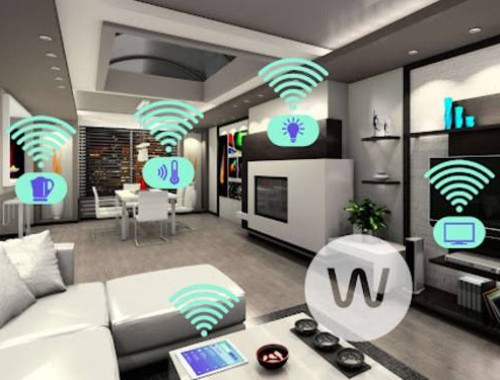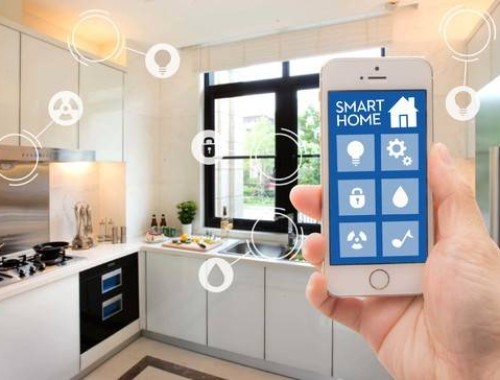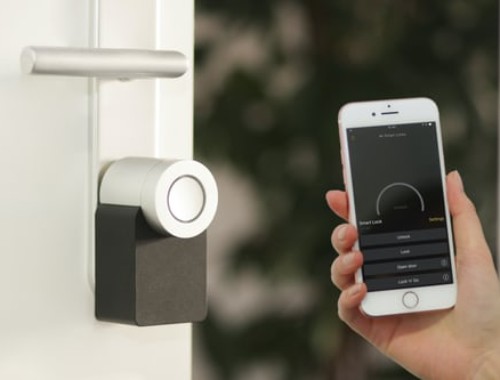After two months of smart home orders, post-90s become the fastest-growing consumer group
Source:http://www.nbd.com.cn
The growth rate of our country' s smart home industry reached 25% in the first half of this year, becoming the fastest growing period in the industry' s history.
Smart home is an important product of consumption upgrades in recent years. It specifically refers to products such as home appliances, kitchens and bathrooms with intelligent and interactive features. In the first half of this year, the growth rate of our country' s smart home industry reached 25%, becoming the fastest growing period in the industry' s history.
However, unfortunately, from the situation reported by consumers, there are currently few truly smart homes. Most products can only provide a simple smart experience. There are still many shortcomings in actual use, and some are even not as good as traditional home appliances.
The product is in short supply, and the order is scheduled for more than two months
On August 30, according to a CCTV financial report, a dealer told reporters that the average monthly passenger flow in their stores has nearly doubled from last year this year, and smart bathroom cabinets and smart shower products are selling well. Many goods have been in short supply, and some have to wait two months to get the goods.
Wang Xianguo, a smart bathroom distributor in Suzhou, Jiangsu, said that the sales revenue of stores has increased by about 20% in all aspects, and the proportion of smart products is now increasing rapidly.
The reporter' s interview found that although the sales of many home furnishing brands have increased significantly, the prices are relatively stable and have not risen.
According to data from the China Smart Home Association, in the first half of this year, the sales revenue of the domestic smart home industry exceeded 160 billion yuan for the first time, a year-on-year increase of 25%. The number of products has also expanded from the original 20 categories to 30 categories.
The growth of market demand has allowed many smart home companies to expand their production, and the rise in production costs has become a major pressure facing companies this year. In the face of this pressure, how can companies achieve neither price increases nor losses?
A smart integrated stove manufacturing company in Zhejiang, although it is weekends, but the factory has to work overtime. The person in charge said that they are now producing orders more than a month ago. This year, this kind of overtime production has become the norm.
A reporter from a smart sanitary ware company in Fujian found that raw materials have risen significantly, with the increase of more than 20 raw materials ranging from 50% to 120%, which directly led to a 20% increase in overall production costs. In order to offset the cost pressure, companies are also deploying intelligent production methods. The person in charge has calculated an account for reporters. Every 10,000 yuan invested in smart production will generate sales revenue of 20,000 yuan, that is, the input-output ratio can achieve one than two.
Lin Xiaowei, vice president of a sanitary ware company in Fujian, said that through our own 5G-manufactured smart factory, big data automation analysis, including the entire automation and the interconnection of things, can reduce the cost of the entire production.
In addition, some companies are also expanding their product pipelines, reducing some low value-added products that rely on raw materials, and focusing on new products with a strong sense of technology and more modern functions, which can improve the core competitiveness of their products and increase profits.
The reporter found that with the continuous expansion of the smart home market, the post-90s generation has become a segment with the fastest growth in demand. Many companies are focusing on this part of the group to seize the opportunity to deploy personalized products. As competition intensifies, industry concentration will further increase in the future.
Smart Home is “really scented” or IQ tax?
According to previous reports, "When I bought it, I felt that this thing has a strong sense of technology. It can be controlled by mobile phones, remotely controlled, and even voice controlled through smart speakers at home. It's great." As a technology product enthusiast, citizen Ms. Xu bought a smart bedside lamp for hundreds of yuan, but after actually using it, she realized that she had bought an impractical "vase". She told reporters that although this bedside lamp looks very smart, these technological functions are not suitable for bedside lamp application scenarios.
There are also many consumers who have similar experiences with Ms. Xu that the so-called smart functions of many products lack designs based on actual use requirements, mostly for "eyeball" and "show experience." After the consumer buys it home, the actual use experience is far from the ideal state. Many users simply gave up the so-called smart functions in the later period, and the smart homes that were purchased at 3 to 5 times the price of traditional home furnishing products were reduced to ordinary homes in the end.
"I pay a lot of IQ taxes on smart homes!" Mr. Zhao, who renovated the house last year, talked about smart homes.
He introduced to reporters that in order to make his home look like a high-tech house in a sci-fi movie, he even remodeled the circuits and switches, and the cost of lighting and lighting modification alone reached tens of thousands of yuan. Regrettably, although each function can be used normally, the actual operation experience has repeatedly frustrated Mr. Zhao. In addition, because the lights, TVs, curtains, etc. at home all use software from different manufacturers, when the same voice assistant device is used to control, there will often be "delay", "crash" or even "execute wrong instructions", which greatly affects Use experience.
According to the analysis of industry insiders, the current smart home software market still lacks corresponding standards. In order to compete for market share, several mainstream system suppliers are unwilling to abandon strict technical barriers, making equipment manufacturers have to make trade-offs and choices. If consumers want to use multiple smart home products more conveniently, they must be forced to choose products that are compatible with the same system, and the autonomy of consumption is limited to a certain extent.
The source has been identified in this article. All copyrights belong to the original anthor. In case of infringement, please contact us.
-

Midea released the first smart home operating system based on HarmonyOS
-

The second quarter analysis of the European smart home market is released, Amazon tops the list
-

Huisen Furniture joins hands with Xiaomi, entering the Smart Field of the Whole House
-

The demand for home security is as high as 92%, with huge growth potential

 沪公网安备31010402003309号
沪公网安备31010402003309号



